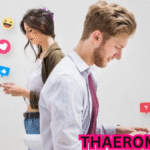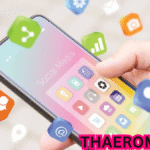The Digital Spotlight: Understanding the Rise of InfluencersGoneWild
InfluencersGoneWild In the ever-evolving world of social media, the term “influencer” has taken on multiple shades of meaning. From brand ambassadors to lifestyle coaches, influencers shape how people see the world, what they buy, and how they behave online. Among these various phenomena, “InfluencersGoneWild” has become a highly searched and talked-about term. It captures the essence of unfiltered, raw, and often controversial behavior exhibited by online personalities. This term isn’t just about exposure or scandal—it reflects a broader cultural shift in how influencers operate and how audiences consume content.
The concept of influencers going wild isn’t new. Historically, celebrities have had their fair share of public outbursts and missteps. However, with social media platforms like TikTok, Instagram, and Twitter giving influencers direct access to audiences without the mediation of public relations teams or editors, their mistakes and controversies become instantly viral. InfluencersGoneWild represents a slice of that digital reality, where unguarded moments, controversial choices, or deliberate provocations become the main content.
The Nature of Virality and the Power of Spectacle
One of the most defining aspects of InfluencersGoneWild is the nature of virality. When a moment is shocking, dramatic, or unexpected, it gains traction quickly across platforms. Influencers, knowingly or unknowingly, become part of a spectacle-driven culture where attention is the currency. Some may argue that the platform rewards impulsive, wild behavior because it gets engagement, comments, and shares.
Virality does not distinguish between positive and negative attention. A controversial video, a heated argument on livestream, or a risqué post might be seen by millions within hours. For some influencers, this exposure translates into followers and financial opportunities. For others, it leads to backlash, canceled brand deals, or even legal repercussions. The InfluencersGoneWild concept encapsulates this dual-edged sword where fame and infamy blur together.
Blurring the Line Between Performance and Reality
A defining characteristic of modern influencers is their ability to turn everyday life into content. What once may have remained a private moment now becomes a shareable video or Instagram story. The persona crafted online often walks a thin line between genuine self-expression and exaggerated performance. InfluencersGoneWild taps into this tension—where it becomes hard to tell whether a wild moment is spontaneous or scripted.
Some influencers intentionally push boundaries to stand out in a crowded digital landscape. Their content becomes more extreme, edgy, or controversial, creating a persona that thrives on unpredictability. This cultivated chaos becomes part of their brand. Others may find themselves spiraling in real life, and those unguarded moments are captured and broadcast without consent. Either way, the audience becomes a voyeur, consuming not just curated content but raw human drama.
Psychological and Social Impacts on Influencers
Behind the camera and beneath the filters lies a complex emotional and psychological landscape. Constantly being watched, evaluated, and critiqued can take a toll on mental health. The phenomenon of InfluencersGoneWild sometimes reflects more than just sensationalism—it can signal burnout, anxiety, or the unraveling of a persona constructed under pressure.
The need to stay relevant leads many influencers to increase their posting frequency, stage elaborate stunts, or open up about deeply personal experiences. In this quest for engagement, boundaries can become blurred. Oversharing and risky behavior are incentivized by algorithms that prioritize content which evokes strong reactions. This pressure cooker environment contributes to breakdowns, erratic behavior, and the kind of raw content that gets labeled as InfluencersGoneWild.
Audience Responsibility and the Ethics of Consumption
While much attention is given to influencers themselves, the audience plays a critical role in shaping digital culture. The hunger for shocking, dramatic, or scandalous content drives the algorithms that reward such behavior. Every click, comment, and share becomes a form of encouragement—even if it’s accompanied by criticism.
Viewers may not always realize the ethical implications of consuming and spreading content that portrays someone in a compromised state. When an influencer is publicly unraveling, mocking or celebrating that downfall can have real-world consequences. InfluencersGoneWild as a phenomenon is as much a mirror to our collective digital appetite as it is a critique of influencer culture.
Platforms’ Role in Enabling or Regulating Content
Social media platforms occupy a powerful position in moderating or amplifying content. Algorithms determine what goes viral, while content guidelines shape what is allowed or removed. InfluencersGoneWild often exists in a gray area where content toes the line between permissible and problematic.
Platforms face ongoing criticism for not doing enough to protect both creators and consumers. Content that gets flagged or removed on one platform may still circulate freely on another. Inconsistency in enforcement creates confusion and sometimes encourages influencers to test limits. In this environment, wild content is not just allowed—it is sometimes indirectly rewarded.
Monetization and Exploitation of Wild Behavior
In many cases, the same content that sparks outrage also brings financial gain. Influencers who go viral for controversial behavior may receive more views, brand deals, or paid collaborations. This dynamic creates a feedback loop where going wild isn’t just a risk—it becomes a strategy.
Some influencers launch subscription-based platforms to capitalize on their notoriety, offering exclusive or uncensored content to paying audiences. While this model empowers creators financially, it also raises questions about exploitation. Are influencers being authentic, or are they exploiting their own chaos for profit? InfluencersGoneWild exists at the intersection of personal freedom, creative expression, and commercial incentives.
The Role of Cancel Culture in Shaping Behavior
Cancel culture plays a significant role in the rise of InfluencersGoneWild. When influencers cross lines or offend sensibilities, the backlash can be swift and unforgiving. Entire careers have been derailed by a single viral moment. At the same time, some influencers bounce back stronger than before, gaining even more attention after a public scandal.
This paradox creates an unpredictable environment where some fear cancellation, while others view it as a stepping stone to greater fame. InfluencersGoneWild reflects the uncertainty and instability of influencer careers, where a misstep can either end everything or amplify success.
Cultural Implications and Global Reach
What started as a niche internet trend has become a global cultural phenomenon. The idea of InfluencersGoneWild transcends borders, languages, and platforms. In every country with an internet connection, there are stories of influencers who became famous (or infamous) for their wild behavior.
These stories often reflect local values, norms, and taboos, making InfluencersGoneWild a lens through which to study how different societies react to fame, authenticity, and digital chaos. While the content may vary, the underlying dynamics remain the same—audiences are drawn to spectacle, and influencers walk the line between expression and excess.
The Future of Influencer Culture
As the digital ecosystem continues to evolve, so too will the nature of influencer culture. The concept of InfluencersGoneWild is likely to persist, but its manifestations may change. With increasing calls for mental health awareness, ethical content creation, and platform accountability, the future may hold a more balanced and responsible approach.
At the same time, as long as virality remains the goal, there will always be incentives to push boundaries. The challenge lies in finding equilibrium—where creators can be authentic without self-destructing, and audiences can be engaged without being exploitative.
FAQs
What does InfluencersGoneWild mean?
InfluencersGoneWild refers to a phenomenon where online influencers behave in a wild, unpredictable, or controversial manner—either intentionally for attention or unintentionally due to personal struggles. This behavior often gains viral attention and sparks debate.
Is InfluencersGoneWild a website or a concept?
While some may associate the term with specific websites or media channels, it has also evolved into a broader cultural concept used to describe the unfiltered or chaotic actions of social media influencers.
Why do influencers act out or behave wildly online?
There are many reasons: some do it to gain attention and followers, others may be dealing with personal issues or burnout, and some may be testing boundaries to stand out in a crowded space.
Does going viral for bad behavior help or hurt influencers?
It can do both. Some influencers gain more fame and opportunities from viral scandals, while others face backlash, lost sponsorships, and reputational damage. It depends on how the situation is managed and perceived.
How can audiences respond more ethically to this kind of content?
Audiences can be more mindful about what they consume and share. Avoid amplifying harmful content or mocking individuals going through personal issues. Support creators who promote healthy, authentic content.
Are social media platforms responsible for wild influencer behavior?
Platforms play a significant role by incentivizing certain types of content through their algorithms. They also bear responsibility for content moderation and ensuring community standards are upheld consistently.
What can influencers do to protect their mental health?
Setting boundaries, taking breaks, seeking therapy, and surrounding themselves with supportive people can help. Being transparent with audiences about struggles without oversharing is also important.
Is InfluencersGoneWild a temporary trend or a lasting part of internet culture?
Given the nature of digital fame and human psychology, it appears to be a lasting part of internet culture. However, how it is addressed and perceived may evolve over time as platforms and audiences mature.
Can wild behavior be a form of creative expression?
Yes, in some cases, what seems wild or chaotic InfluencersGoneWild may be part of an influencer’s artistic or expressive persona. The line between performance and authenticity is often subjective and context-dependent.
Will influencer culture change in the future?
It’s likely. With increased awareness about mental health, ethics, and digital responsibility, there may be a shift toward more sustainable and grounded content creation practices. However, the desire for attention and spectacle will continue to influence behavior online.


